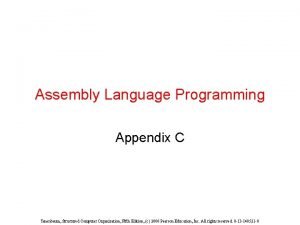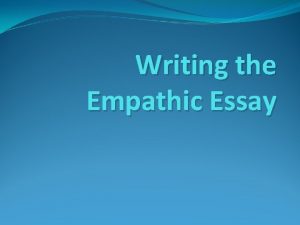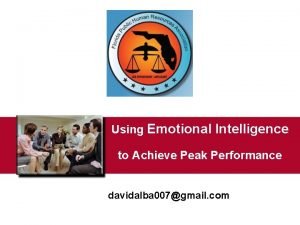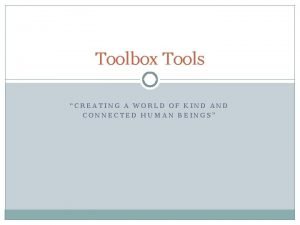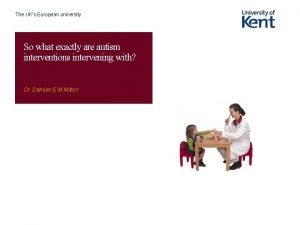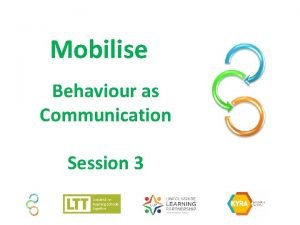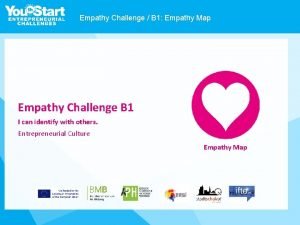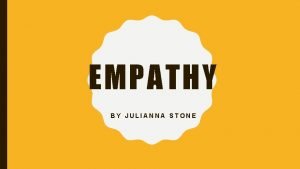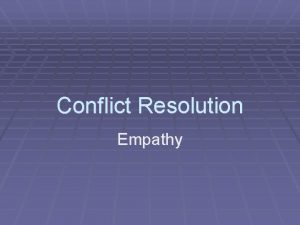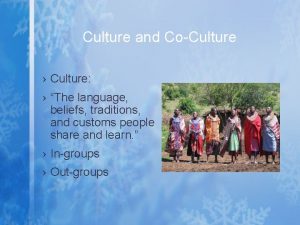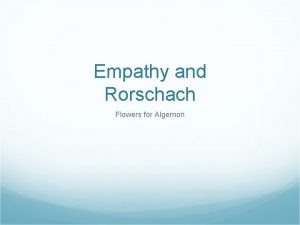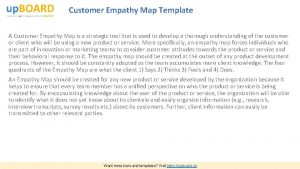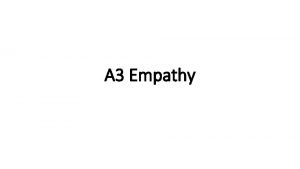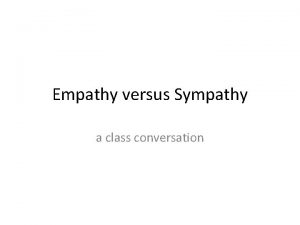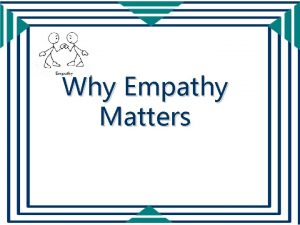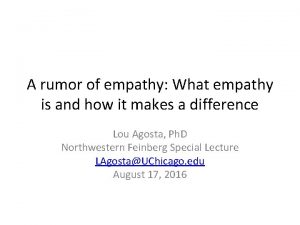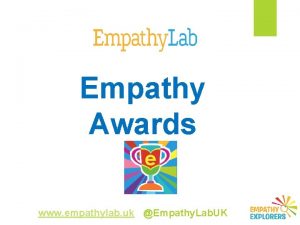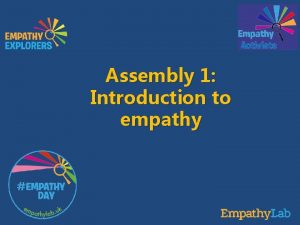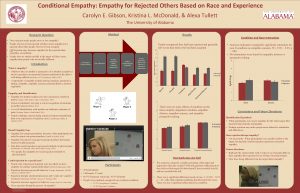APPENDIX CONTENTS DATA CULTURE 3 Traditions Language EMPATHY




























- Slides: 28

APPENDIX

CONTENTS DATA CULTURE 3 - Traditions Language EMPATHY 6 - Surveying Household Overview DEFINE 9 - Barriers to Access 3 Pipelines 14 - NAYO Data Survey Data Doctor Data STAKEHOLDERS 19 - NAYO Queen Elizabeth Central Hospital FACT IDEATE 24 - Top Insights

CULTURE INTRODUCTION AND OVERVIEW

TRADITIONS FEMALE DRESS Females should wear a chitenje over their clothing when in the villages. A chitenje is a piece of cloth to be wrapped around the waist. It costs around 1500 K for 2 m in the village, but goes up to 3000 K in the city. SHAKING HANDS When shaking hands it is a mark of respect to touch you right wrist with your left hand when shaking. This is particularly important when greeting village elders. MALE DRESS Males should wear full length pants when in the villages as a sign of maturity. CATCHING BUSES HAGGLING Public transport is really easy - just go to the depot and tell them where you are going. Buses can also be stopped on the side of the road. Buses will not always go directly where you want so you may have to walk a little way sometimes. Shopkeepers will notice you’re not a local. Don’t be afraid to start at half or two-thirds of the price, but ultimately the rule is to pay the amount that you feel comfortable with and remember that what is a little difference for you could be much bigger for someone else. TIPPING THANKYOU! Malawians love manners so always say thank you (Zikomo!) this will build really good rapport and mutual respect. Also say ‘zikomo’ as a sign of respect when passing by a group of people If tipping, try and give the tip directly to the person serving you so it goes to them, not the business. If there is a VAT or service fee, there is no need to tip. CHRISTIANITY Malawians are very religious and speak often about God and church so be respectful. This also means be careful about cursing in public, people will judge you

LANGUAGE Bho/ Wawa (only use with youth) Tiwonana later Muli bwanji? Mwadzuka bwanji? are you? Mwaswela bwanji? afternoon/evening, Moni! Muli bwanji? Hello! Ndiri bwino, ka inu? Good bye!/ See you Hi, how are you? Good morning, how Ndiri bwino, zikomo! Good Dzina lako ndani? how are you? Ndiri bwino, ka inu? Zikomo you. (used liberally) Zikomo kwambili Tsiku la bwino Muyende bwino safe! Dzina lako ndi ndani? Dzina langa ndine … I’m good, and you? Dzina langa ndine Emma. Thank you very much. Have a good day! Travel What is your name? My name is … – Okay, okay. Tionana! Muyende bwino!

EMPATHY “QUALITY OVER QUANTITY”

SURVEYS ● Our survey was aimed at being socially sensitive to gain the trust of locals and allow them to be more open when answering ● The team found that the Malawian culture is one that aims to please and the locals would in most situations give answers that they think we want to hear and were not being completely honest ● Most people would not reveal the illnesses that they actually have. They would only state common illnesses so this proves that some data may be inaccurate ● We were also unable to form that vital personal relationship with the villagers as a lot of information was lost in translation ● Understanding the background of the

SURVEYS Initially, our survey was a joint survey between the health, energy and agriculture assessments. We eventually found that this meant that the survey was too long and interviewees would get tired and stop replying as thoughtfully especially because the health questions were at the end. Through this, we noticed that the community is more interested in agriculture especially as Malawi’s main economic component is agriculture. This validates the uniform progression of the three teams. When agriculture is improving and people are earning a higher income, they will be able to afford to look after their health and it also increases their likelihood of accessing health education. The team then decided to write a separate health survey and add more qualitative questions to allow us to gain a deeper understanding of the issues people were facing. We were able to ask more questions about access and the reasons behind the struggles. How long does it take you to get to the doctor? The team also decided to conduct surveys with the health officials in pharmacies, clinics and hospitals. This allowed us to gain a holistic understanding of the issues in the healthcare sector. This also gave us a different perspective from the professionals so we could understand what problems they were facing. We found that the main issue was that individuals were poorly educated and would overcrowd the health facilities because they were too dependent on the opinion of the clinician. Mumayenda nthawi yayitali bwanji pokafika ku chipatala?

EMPATHY CONT. Key points to note; ● Malawi is the world’s 6 th poorest country— GDP per capita: $1, 139 (£ 929)* ● The government’s total expenditure on health is 9. 8% of total GDP ● Queen Elizabeth Central Hospital is the main public hospital in Blantyre and some patients may be referred to Kamuzu Central Hospital in Lilongwe ● HIV is the leading cause of death for adults Understanding Malawi’s background and ● The leading cause of death for infantssocially is socioeconomically allowed us to better understand the people pneumonia and aided in data analysis. It also allowed us to have a solid context behind most of our survey questions ● Average life expectancy is 60 yrs for males and 62 yrs for females *Tasch, B (2017)

DEFINE “Problems worthy of attacking prove their worth by fighting back”

BARRIERS TO ACCESS Private hospitals are very expensive and unaffordable by a large percentage of the population so most of the population has to visit public hospitals. These are very overcrowded and understaffed. Most of the time, they do not even have medication in stock to provide to patients. For example, the clinician at Pensulo clinic stated that they have not had painkillers for three months When this happens, individuals are sent to pharmacies to buy medication but most of them will simply wait the next day and visit another health centre. This is because medicine stores/pharmacies are scarce and too expensive Many people have to walk long distances to reach health facilities (takes more than 2 hrs) and this could lead to other health complications

LACK OF EDUCATION 67. 9% of the population interviewed had attained only the primary school certificate Out of the percentage that had attended health classes, the most commonly attended were hygiene and nutrition classes Only 20. 8% of the population interviewed had previously attended a health education class Clinicians reported that many individuals do attend health education seminars provided by the clinics but ignored the teachings This lack of education means individuals are less likely to receive a high income, and less likely to know good hygiene and disease prevention practices The health officials stated that if people had higher levels of education, there would be less traffic in the hospitals with people that have minor illnesses

LOW SOCIOECONOMIC STATUS ● ● ● Across different communities, health issues and frequency of illness was directly correlated with low socioeconomic status Low income, education and unemployment means that individuals are unable to protect themselves from health problems ○ Lack money products ○ Uneducated practices ○ Lack of education around cooking nutritious meals to on buy safe sanitary water Working with the other teams such as agriculture could help improve their diet and income to empower the individuals. This will consequently reduce their Low salary Most individuals from low socioeconomic status had poor education and said they did not have enough support to finish school (some due to death of parents and others due to lack of income) This lack of education also meant that many females were becoming mothers as young as 12 yrs old Low education for children

3 PIPELINES OF THE MALAWIAN HEALTH SYSTEM HOSPITAL First of all, it is essential to determine where the bottleneck is and what the point of entry will be. The team decided that we would enter the hospital system via the District Health Officer and Chief Administrative Officer. Based on the survey responses, future teams should determine what the easiest rate limiting step to access is. Value proposition: How are we going to reduce the high traffic in hospitals but still have effective diagnoses? NGO Funded Clinics Future teams should aim to deeply understand the operations of not only NAYO but also other NGO based clinics. Rate Limiting Steps: lack of expertise and facilities and difficulties with processing The second stage would be to test the app to prove the concept. Will the diagnosis process actually be streamlined via the technology platform? Determining how this can be done will assist in ideation to develop the ‘what’. INDIVIDUALS First of all, future teams should aim to understand how PE can develop a product and the means through which it will be distributed to reach maximum effectiveness. Rate Limiting Steps: low incomes, knowledge and poor transport to facilities Secondly, teams should understand how the communities interact with any solutions we might provide. Are there any specific individuals that can be accessed to make distribution easier?

DATA “The goal is to turn data into information and information into insight”

NAYO DATA The table shows the variance in prevalent diagnosis during different months over the Dec-June period. A reason for the variation in diagnosis is the changing weather conditions over that period, including the amount of malaria diagnosis which is higher during the wet season. Furthermore, a report released by the Malawi Department of Climate Change and Meteorological Services stated that there was normal to above normal amounts of rainfall in January to March period of 2017. Overwhelmingly there is a prevalence of respiratory related diseases and sepsis affecting the communities serviced by the NAYO Health Clinic, with ARI, asthma and pneumonia also being diagnosed frequently. The second most concerning diagnosis is sepsis which can be a result of prolonged respiratory infections such as pneumonia or other infections that affect the bloodstream. 1 st Common 2 nd Common 3 rd Common Overall RTI, 15% SEPSIS, 12% ARI, 11% Dec 16 GE, 18% RTI, 16% ARI 16% Jan 17 GE, 17% MALARIA, 11% ARI, 10% Feb 17 ARI, 18% SEPSIS, 12% GE, 12% Mar 17 RTI, 20% SEPSIS, 15% MALARIA, 12% Apr 17 RTI, 19% SEP, 12% MALARIA, 10% May/Jun 17 ARI, 12% URTI, 11% MSP, 9%

SURVEY DATA We found that 60. 2% of the community surveyed accessed health facilities by walking and it took 37. 1% more than 2 hours to reach the health care facility. There is an overwhelming dependence on the health care system. When people fall ill, even in the slightest way, they will immediately visit the clinic. This is a risk factor as walking increases their chance of injury (heat, bone injury). This also means they are spending the whole day accessing health and having to neglect work and thus income is reduced) This dependency is due to a lack of education so people fear every illness and seek the opinion of a doctor 75. 3% of the interviewees had not previously attended any health education classes. This is an indication of the levels of education around health practices and gives context as to why individuals rush to doctors when they fall ill. They often don’t know what has caused the illness and how they can care for themselves to prevent it.

DOCTOR INTERVIEWS We spoke to several doctors from QECH, Gateway Clinic, NAYO and Pensulo and the common findings were; ● ● ● There is a lack of health staff and the clinicians are often burdened by the large numbers of patients that they have to see (an average of 150 per day) Many patients come to the clinic just seeking attention when they are not really sick. This is especially true for mothers. When they bring their ill child to the clinic, they will also claim that they are sick so they get medication to store at home in case they do eventually fall ill The patients are given health education by health service attendants and sometimes personally by the doctor depending on the illness but they usually ● ● The rural health centres are directly connected with QECH as the central point. Most clinicians would refer patients with maternal issues to Zingwa and for other issues such as low supply in medication to Gateway clinic. The clinicians also stated that major illnesses were malaria, common cold and STIs There are many myths around health issues due to lack of education in the communities e. g some people believe that malaria can be contracted from spending too much time in the rain Clinicians reported that if patients were educated a little more, they would not be coming to the clinic with their minor illnesses such as flu. They would know how to treat these at home Method of diagnosis; Due to a lack of technological resources and time restraints brought upon by a lack of human resources, most diagnoses were done simply by observation and asking questions. A member of the team got to sit in the consultation room with the clinician at NAYO and the following are key findings; ● All patients presenting with fever were sent for malaria testing ● If not malaria, the doctor would conclude a similar disease based on symptoms ● Health education was given to every BP patient ● Mothers are paranoid and claim illness when it’s a mere headache or lethargy

STAKEHOLDERS “It’s not about what you know, but rather who you know”

NAYO Nancholi Youth Organisation WHO THEY ARE Nancholi Youth Organisation undertakes a holistic approach to community development by undertaking various initiatives such as HIV/AIDS education, economic empowerment and environmental protection. They also have a free o. PD clinic twice a week and run palliative care home services once a week. NAYO have sustained their operations for 13 years and are very well respected in the villages Primary field guides: Chisomo, Annie, Philip CURRENT PARTNERSHIP MOVING FORWARD CONTACT NAYO issued field guides to accompany us into our primary investigations, allowing us to gain permission from the chief(s) and conversing with our interviewee’s in Chichewa. Communication is imperative to harbour relationship with NAYO. Upon leaving, we have showed our appreciation by inviting the field guides over for dinner. They are a vital stakeholder in regards to the product we develop, they would allow us to test it in their clinic. By continuing our communication, both from Australia and in Malawi, we can ensure a sustainable and complementary relationship between NAYO and Project Everest. George Andrew Nedi Thus, the field guides proved to be vital in collecting our quantitative data and allowed for a holistic investigation by deepening our understanding of qualitative characteristics of the Malawian culture. The also allowed us to gather data from their records and test out the Your. M. D app with patients whilst another team member observed the method of diagnosis. Project Coordinator Phone: +265 (0) 999 762 724 +265 (0) 882 130 961 Email: nancholiyouthorganisation@ gmail. com Address: Nancholi Youth Organisation P. O. Box 2057 Blantyre, Malawi

QUEEN ELIZABETH CENTRAL HOSPITAL WHO THEY ARE CURRENT PARTNERSHIP MOVING FORWARD CONTACT They are the major public health care provider in the Southern region. Most people even from as far as Mulanje travel to this facility for all its services including surgeries. This shows that they are majorly trusted within the community and can provide vital information for project interests such as data to help further define health issues in the region, how individuals access health and what limitations there are in the Malawian healthcare system. The Chief Administrative Officer (CAO) allowed us to access the doctors by sending out a mass email with our survey. We were able to interview one doctor due to the busy nature of their work. Waiting times were long and meetings were sometimes cancelled as they facility is understaffed and the doctors are very busy and barely have time for interviews. The team was however able to interview the CAO to explain Project Everest and maintain a good relationship so that future teams have less trouble accessing the facility The team has established a good relationship with the hospital. We would like to keep working with them, the CAO was genuinely interested in the work that PE does. Keeping them updated with our progress in Blantyre could further solidify this relationship and possibly allow QECH to become early adopters of our product Mr Themba Mhango Chief Administrative Officer Phone: +265 88 882 6812 Email: themba. mhango@gmail. com

FACT Forum for AIDS Counselling & Training WHO ARE THEY CURRENT PARTNERSHIP MOVING FORWARD CONTACT FACT is a NGO that aims to educate the youth about sexual health, especially focusing on HIV/AIDS. They realised that there is a lack of organisations that aim their message at young people when these are the people that are struggling the most with the HIV/AIDS epidemic. The CEO works in communities in Blantyre and creates events as this is an effective method of reaching the youth. They also offer counselling for young couples, support groups for youth with HIV and distribute condoms. They also run educative sessions on their social media to reach more people. The team established a very good relationship with FACT at the first meeting to support each other. FACT is quite a young organisation as well and they appreciated our interest as it would help them grow. The team was invited to FACT’s event and were allowed to survey the youth and gather data which would help in product development and ideation. The founder has connections with College of Medicine as he is a recent graduate so this could help us form a solid relationship with the college. Pemphero Mphande Aside from NAYO that helps us gain access into communities, we could also use FACT as a means of gaining access into other communities around Blantyre for data variation. Their events could also potentially be ideal for promoting our product Executive Director Phone: +265 994 567 746 +265 881 756 602 Email: pmmphande@gmail. com Social media Fb: https: //web. facebook. com/FACT. Malawi/? _rdc=1&_rdr Twitter: https: //twitter. com/fact_malawi

ZINGWA CLINIC WHO ARE THEY CURRENT PARTNERSHIP MOVING FORWARD CONTACT Zingwa clinic is a small health centre located in the Zingwa suburb. We attempted to interview the nurses at Zingwa clinic but when we did get the chance, the nurse was extremely busy and got distracted by her work as she was the only nurse on duty. We decided to leave behind some surveys that had been translated into chichewa so that we allow the nurses to fill them in at their own pace but this did not happen We would like to keep visiting the clinic, learning more about their operations and understanding the struggles that they face. Maureen Sitima They mainly offer maternal services to women such as prenatal, post-natal and labour wards. This is ideal especially as the clinic is surrounded by a large community The clinic also provides access to family planning and choice to Malawians in order to address the growing population and prevalence of maternal mortality. This is achieved through providing access and education. They could also provide potential testing facilities for a prototype. They also provide a large demographic of women with children to allow us to fully understand maternal issues that women are facing in the Blantyre region. Nurse and Midwife Phone: +265 99 993 0888

GATEWAY CLINIC AND THE DHO WHO ARE THEY CURRENT PARTNERSHIP MOVING FORWARD CONTACT The team met with the District Hospital Officer, Dr Medson Matchaya, and explained the intentions of the health assessment team. Dr Matchaya granted us access to interview the nurses and clinicians at Gateway clinic. We were able to gather data that portrays their daily struggles which were poor infrastructure, lack of health staff and resources. The team explained the idea of a potential app to the clinicians and nurses and they gave positive reactions. Dr Medson Matchaya Dr Matchaya managed the health services in the Blantyre district so it is important to maintain a vital relationship with him for positive adoption of our solution. Gateway clinic is a small clinic, usually with only one clinician that aims to alleviate the pressure on QECH. Patients have to visit this clinic before they go to the hospital so they are usually very busy and full. They provide malaria and HIV testing as well. This is a very busy clinic and caters for individuals from the whole southern region of Malawi so the variety of people could be an advantage when testing out a prototype. Future teams will be able to get a good range of data for effective comparison. District Hospital Officer Phone:

PENSULO CLINIC WHO THEY ARE CURRENT PARTNERSHIP MOVING FORWARD Pensulo clinic is one of the major health care providers in the Nancholi community. They receive 150+ patients per day but only have 18 staff (who are not present daily). They have 1 clinician, 2 nurses and 16 other staff of which they also have health service attendants who educate the community every morning while they wait for the doctor. Many people walk up to 5 hours to reach the clinic. This is quite difficult especially if one is ill, the clinic is remote and the path is very hilly. We interviewed the staff present at the clinic and explained our intention and managed expectations. They were interested to see where we go with the data that we collect. They are a vital stakeholder because 30% of the population of interviewees visited the clinic. Due to the skeptical nature of staff members at the clinic any future contact with them must be done ensuring all expectations are managed. Communication with the clinician must also be maintained so that future teams are able to access the clinic and the facilities readily. CONTACT Clayton Clinician Phone: +265 (0) 99 395 9869

IDEATE MOONSHOT CREATIVITY

IDEATION Med. ED Your. MD WHY To educate the communities and reduce traffic in hospitals for minor illnesses. To enable access to medical information and education, as well as make health services more efficient. HOW By alleviating the congestion of the clinics and hospitals through utilising cognitive technology, which has enormous intellectual resources that analyse a user’s symptoms matches them to a diagnosis. This will open up access to medical care. WHAT Your. MD is a text-based app (that can be used on a smart device) where the user imputes their symptoms and, after answering a series of follow up questions, receives a diagnosis. This is cognitive technology; the more the app is used the more accurate and swift the diagnosis. By educating the community on health practices and what to do in order to prevent illnesses. The app will be tailored to suit the individual and the community they live in so that it can give them relevant information WHAT An offline app (voice or text based) that will answer any health queries an individual has. The app will bring up daily notifications with a reminder to partake in safe health practices. It will also bring up a tip of the day so that the community is constantly learning and being reminded to take care of themselves so they can prevent illness

MUYENDE BWINO, THIS IS AFRICA!
 Appendix c machine language
Appendix c machine language What is cultural relativism
What is cultural relativism Individual culture traits combine to form culture patterns.
Individual culture traits combine to form culture patterns. Batch culture vs continuous culture
Batch culture vs continuous culture Continuous culture and batch culture
Continuous culture and batch culture Individualistic culture vs. collectivist culture
Individualistic culture vs. collectivist culture Indian vs american culture
Indian vs american culture Stroke culture method
Stroke culture method Folk culture and popular culture venn diagram
Folk culture and popular culture venn diagram Sub culture group
Sub culture group Folk culture and popular culture venn diagram
Folk culture and popular culture venn diagram Stab and stroke culture
Stab and stroke culture Homework due today
Homework due today In an inert organizational culture,
In an inert organizational culture, Anaerobic gaspak
Anaerobic gaspak Describe lawn culture and surface plating
Describe lawn culture and surface plating Quality culture changing hearts minds and attitudes
Quality culture changing hearts minds and attitudes Surface culture deep culture and esol
Surface culture deep culture and esol Emphatic writing
Emphatic writing Levels of empathy
Levels of empathy Belligerent
Belligerent Components of empathy
Components of empathy Quiet safe place tool
Quiet safe place tool Double empathy problem
Double empathy problem Power of empathy brene brown
Power of empathy brene brown Psych weakness
Psych weakness Secure base
Secure base Johannes volkelt empathy theory disadvantages
Johannes volkelt empathy theory disadvantages What does empathy sound like
What does empathy sound like
